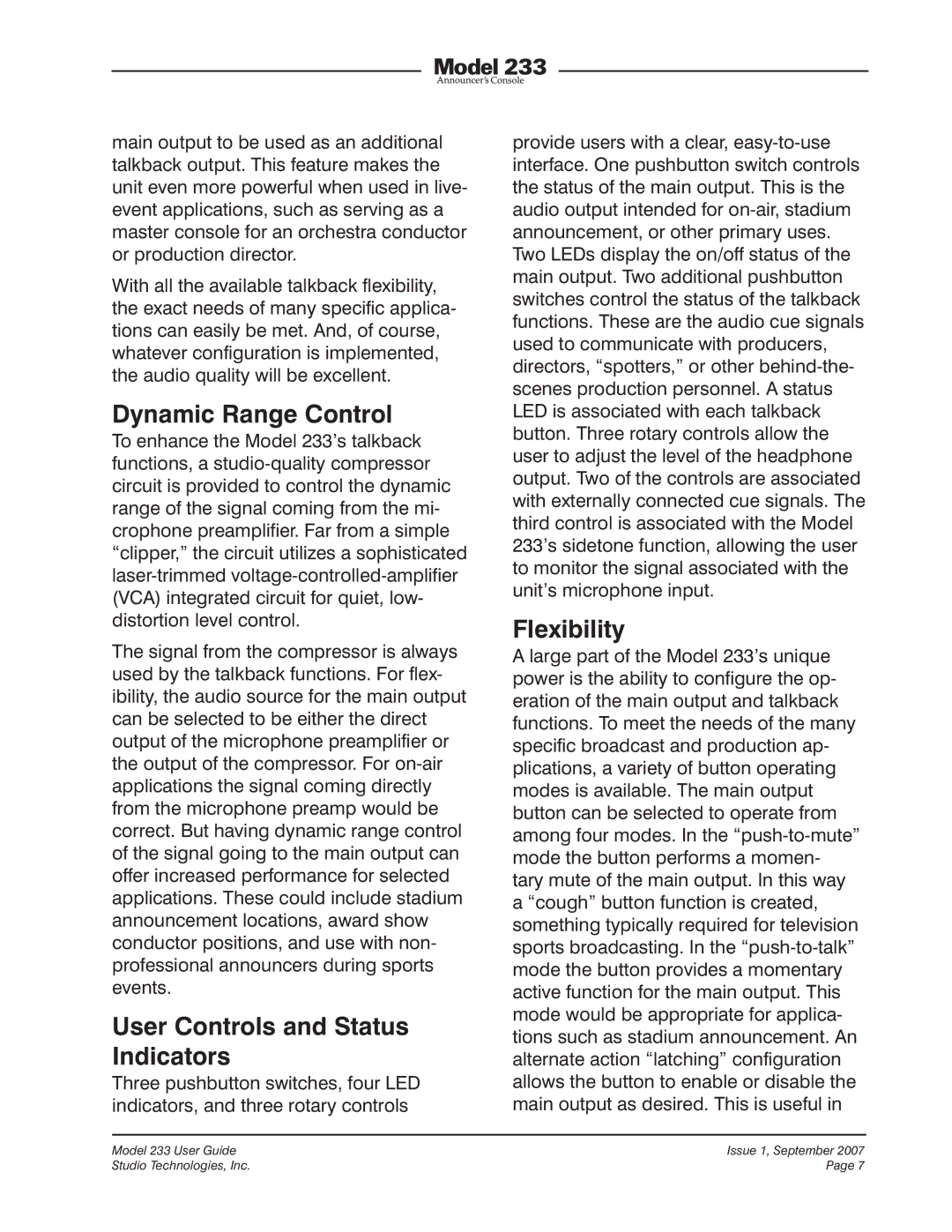main output to be used as an additional talkback output. This feature makes the unit even more powerful when used in live- event applications, such as serving as a master console for an orchestra conductor or production director.
With all the available talkback flexibility, the exact needs of many specific applica- tions can easily be met. And, of course, whatever configuration is implemented, the audio quality will be excellent.
Dynamic Range Control
To enhance the Model 233’s talkback functions, a studio-quality compressor circuit is provided to control the dynamic range of the signal coming from the mi- crophone preamplifier. Far from a simple “clipper,” the circuit utilizes a sophisticated laser-trimmed voltage-controlled-amplifier (VCA) integrated circuit for quiet, low- distortion level control.
The signal from the compressor is always used by the talkback functions. For flex- ibility, the audio source for the main output can be selected to be either the direct output of the microphone preamplifier or the output of the compressor. For on-air applications the signal coming directly from the microphone preamp would be correct. But having dynamic range control of the signal going to the main output can offer increased performance for selected applications. These could include stadium announcement locations, award show conductor positions, and use with non- professional announcers during sports events.
User Controls and Status Indicators
Three pushbutton switches, four LED indicators, and three rotary controls
provide users with a clear, easy-to-use interface. One pushbutton switch controls the status of the main output. This is the audio output intended for on-air, stadium announcement, or other primary uses. Two LEDs display the on/off status of the main output. Two additional pushbutton switches control the status of the talkback functions. These are the audio cue signals used to communicate with producers, directors, “spotters,” or other behind-the- scenes production personnel. A status LED is associated with each talkback button. Three rotary controls allow the user to adjust the level of the headphone output. Two of the controls are associated with externally connected cue signals. The third control is associated with the Model 233’s sidetone function, allowing the user to monitor the signal associated with the unit’s microphone input.
Flexibility
A large part of the Model 233’s unique power is the ability to configure the op- eration of the main output and talkback functions. To meet the needs of the many specific broadcast and production ap- plications, a variety of button operating modes is available. The main output button can be selected to operate from among four modes. In the “push-to-mute” mode the button performs a momen- tary mute of the main output. In this way a “cough” button function is created, something typically required for television sports broadcasting. In the “push-to-talk” mode the button provides a momentary active function for the main output. This mode would be appropriate for applica- tions such as stadium announcement. An alternate action “latching” configuration allows the button to enable or disable the main output as desired. This is useful in

